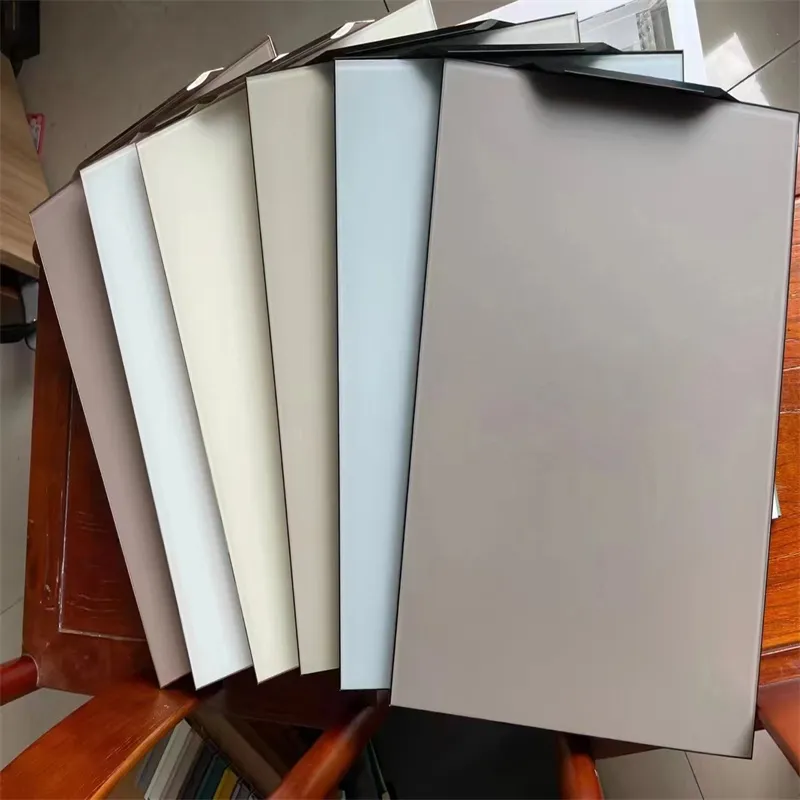10 月 . 21, 2024 11:04 Back to list
Exploring the Benefits and Applications of Tinted Float Glass in Architecture and Design
The Versatility of Tinted Float Glass An Overview
Tinted float glass, a type of glass known for its aesthetic appeal and functional properties, has gained remarkable popularity in various architectural and design applications. This article explores the composition, benefits, applications, and sustainability of tinted float glass, shedding light on its multifaceted nature.
Composition and Production
Tinted float glass is created by adding metal oxides during the glass manufacturing process. These oxides are responsible for imparting color to the glass, ranging from subtle tints to deeper shades. The float process refers to a method where molten glass is floated on a bed of molten tin, resulting in a uniformly flat product. The incorporation of tints not only affects the visual characteristics but also alters the glass's solar performance.
The most commonly used metallic oxides include iron, cobalt, and selenium, which can create various hues, including gray, bronze, and blue. The choice of tint depends on aesthetic preferences and functional requirements, making it a customizable solution for many design projects.
Benefits of Tinted Float Glass
1. Solar Control One of the primary advantages of tinted float glass is its ability to control solar heat gain. By filtering out harmful ultraviolet (UV) rays and reducing glare, tinted glass enhances indoor comfort and protects furnishings from fading. This property is particularly sought after in commercial buildings, where large glass facades are common.
2. Energy Efficiency Buildings equipped with tinted float glass can experience significant reductions in energy consumption. By minimizing the reliance on artificial lighting and cooling systems, the glass contributes to overall building efficiency, leading to lower energy costs. This energy-saving potential aligns with growing global demands for sustainable building practices.
3. Enhanced Privacy Tinted glass offers an added layer of privacy, making it ideal for residential and commercial structures alike. The degree of tint can be tailored to meet specific privacy needs, allowing for natural light while obstructing visibility from the outside.
tinted float glass

4. Aesthetic Appeal The visual aspect of tinted float glass cannot be overstated. Architects and designers frequently use tinted glass to create striking visual effects and establish a cohesive look for their projects. The variety of available colors allows for innovative designs that can complement any architectural style.
Applications
The applications of tinted float glass are diverse, spanning residential, commercial, and industrial settings. In residential homes, tinted glass is commonly used in windows, sliding doors, and shower enclosures, offering both aesthetic charm and practical benefits. In commercial settings, office buildings and retail spaces utilize tinted glass for facades, providing a modern appearance while enhancing energy efficiency.
Additionally, tinted float glass plays a crucial role in automotive design, as many vehicles feature tinted windows not only for aesthetic reasons but also for heat reduction and passenger comfort. The use of tinted glass in the construction of glass canopies, curtains walls, and skylights further illustrates its versatility across various environments.
Sustainability
As the world shifts towards more sustainable practices, tinted float glass is becoming increasingly favored in green building initiatives. Its energy efficiency aligns with certification standards such as LEED (Leadership in Energy and Environmental Design), making it a viable choice for environmentally conscious builders. Furthermore, the glass can often be recycled, contributing to waste reduction in the construction industry.
Conclusion
In summary, tinted float glass represents a harmonious blend of beauty and functionality. Its ability to enhance thermal performance, improve energy efficiency, provide privacy, and contribute to the overall aesthetic of a building underscores its value in modern design. As we move towards a more sustainable future, the relevance of tinted float glass is expected to grow, solidifying its place as an essential material in architecture and design. Whether it’s in the form of striking commercial facades or comforting home interiors, tinted float glass continues to shape our built environment, providing both practical solutions and artistic expression.
-
Wired Glass: A Strong and Secure Glass Solution for Various Applications
NewsNov.04,2024
-
Tinted Glass: A Stylish and Functional Choice for Modern Homes
NewsNov.04,2024
-
The Elegance and Versatility of Silver Mirrors
NewsNov.04,2024
-
The Advantages of Copper Free Mirrors
NewsNov.04,2024
-
Tempered Glass: A Reliable Choice for Modern Applications
NewsNov.04,2024
-
Pattern Glass: Stylish and Functional Glass for Modern Design
NewsNov.04,2024
Related PRODUCTS














